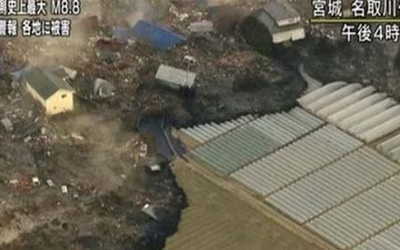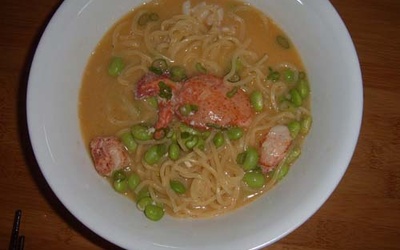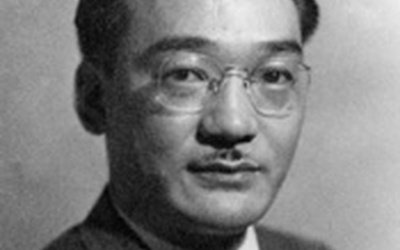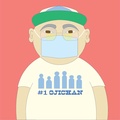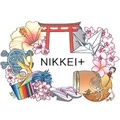
Gil Asakawa
@gilasakawaGil Asakawa is a journalist, editor, author, and blogger who covers Japan, Japanese American and Asian American and Pacific Islander (AAPI) culture and social justice issues in blogs, articles, and social media. He is a nationally-known speaker, panelist, and expert on Japanese American and Asian American history and identity. He’s the author of Being Japanese American (Stone Bridge Press) and his next book, Tabemasho! Let’s Eat! (Stone Bridge Press), a history of Japanese food in America which will be published in 2022. His blog: nikkeiview.com.
Updated January 2022
Stories from This Author
Denver Pays Tribute to Bill Hosokawa, a Japanese American Leader
Sept. 14, 2011 • Gil Asakawa
Many Japanese Americans—especially older JAs—will be familiar with the name Bill Hosokawa. He wrote a column, “From the Frying Pan,” which was a running commentary on Japanese America that ran in thePacific Citizen, the national newspaper of the Japanese American Citizens League (JACL), a civil rights organization, for decades. In 1969 he published the first comprehensive history of Japanese Americans, “Nisei: The Quiet Americans,” that included information about internment. In 1982 he published “JACL: The Quest for Justice,” a history …
“Escape from Manchuria” chronicles a forgotten chapter of WWII history
Aug. 16, 2011 • Gil Asakawa
Emperor Hirohito of Japan gave an unprecedented radio address at noon 65 years ago today, on August 15, 1945, to announce that Japan would surrender unconditionally to the United States and the allied powers. The Victory over Japan Day, or VJ Day, officially ended World War II on September 2 1945 when Japan signed the documents of surrender aboard the USS Missouri, and ushered in an era of incredible prosperity for Americans, even though more wars, in Korea, Vietnam, Iraq …
Occupational Hazards
July 27, 2011 • Gil Asakawa
The war is over and parts of the country, including parts of the capitol, are in ruins. US military forces move in as occupiers, serving as a transition until the country can be rebuilt and a new government installed. Actually, a new government wasn’t installed, at least, not completely. This isn’t Iraq in 2003. It’s Japan in 1945, weeks after the atomic bomb was dropped on Hiroshima and Nagasaki, which led to the surrender of Japan and the end of …
Some people think Japan’s earthquake and tsunami are payback for Pearl Harbor? Really?
June 16, 2011 • Gil Asakawa
I was shocked, saddened and depressed when I learned that there are people in the United States who think that the Tohoku Kanto Earthquake and subsequent tsunami, which has caused enormous damage and casualties that will surely top 10,000, is some sort of karmic payback for Japan’s bombing of Pearl Harbor. Really? Seriously? Yes, unfortunately. Here’s just a sampling of some updates and comments from Facebookthat rant about Pearl Harbor and the tsunami, and how the U.S shouldn’t send any aid to …
Oodles of noodles: Ramen has quietly become hip in Colorado
June 3, 2011 • Gil Asakawa
Erin and I have always been wistfully jealous of our friends in Los Angeles and San Francisco, for lots of reasons but not least the fact that they can eat killer ramen any night of the week. We have our fave ramen-yas in both San Francisco’s Japantown and LA’s Little Tokyo (“ya” means “shop”). There’s also great ramen to be had on the East Coast—I’ve slurped up wonderful noodles and steamy broth in New York City’s funky little “Japantown” district …
Nikkei View: Did the Tohoku Kanto Earthquake bring Japanese Americans closer to Japan?
May 16, 2011 • Gil Asakawa
A couple of days after the tragic earthquake and tsunami struck the northeast coast of Japan’s main island on March 11, the Newark Star Ledger newspaper ran an article with a headline that promised Japanese Americans’ concerns for relatives in Japan: “Japanese-Americans in Fort Lee, Edgewater describe frantic calls to loved ones in quake’s wake.” I was bemused—and a little disappointed—to find that the story wasn’t about Japanese Americans. The reporter went up to some shoppers in Mitsuwa, a Japanese …
Nikkei View: Thoughts on the Great Tohoku Kanto Earthquake and tsunami from a Japanese American in Denver
March 19, 2011 • Gil Asakawa
Unless you live in California, most Americans can’t imagine what it’s like to be in a minor earthquake, never mind a major one. As a kid in Japan, I lived through lots of little quakes. They were no big deal. If the quake seemed serious or went on too long, we’d simply go outside and wait. But there was never a major quake when I lived in Japan. In the 1990s, on a trip to Japan with my mother, an …
A semi-Japan Town in Manhattan
Feb. 21, 2011 • Gil Asakawa
The ebb and flow of New York neighborhoods is a great example of how cities evolve. When I attended Pratt Institute in the late 1970s, the East Village neighborhood in Manhattan along St. Marks Place (8th Street becomes St. Marks Place east of 3rd Ave.) was a haven for punk rockers and hipsters, with used record stores (this was pre-CD) and tattoo shops. Drugs were a currency on the street, and leather the couture of choice. I can recall walking …
The World Still Needs Min Yasui
Feb. 11, 2011 • Gil Asakawa
It’s easy to lose sight of someone’s national reputation if that person is a part of the local fabric. I'm reminded of this fact about the late Minoru Yasui, who died in 1986 after a long career as an attorney and community activist. In Denver, he’s best known as the executive director of the Denver Commission on Community Relations from 1967 to 1983. He’s often credited as the man who was so respected within Denver’s ethnic enclaves that he prevented …
Japanese American identity – How do I feel when someone says “Gil-san”?
Feb. 4, 2011 • Gil Asakawa
I had an interesting thread of conversation the other day on Facebook, after someone sent me a friend request that ended with the person (he’s Caucasian) calling me “Gil-san.” He wrote this in good cheer and good faith, and as a sign of collegial respect. I know that. But it struck me odd somehow, that non-Japanese people (usually Caucasians) throughout my life have assumed that it’s perfectly normal to call me “Gil-san,” or to say “konnichiwa” (“hello”) or “sayonara,” as …




